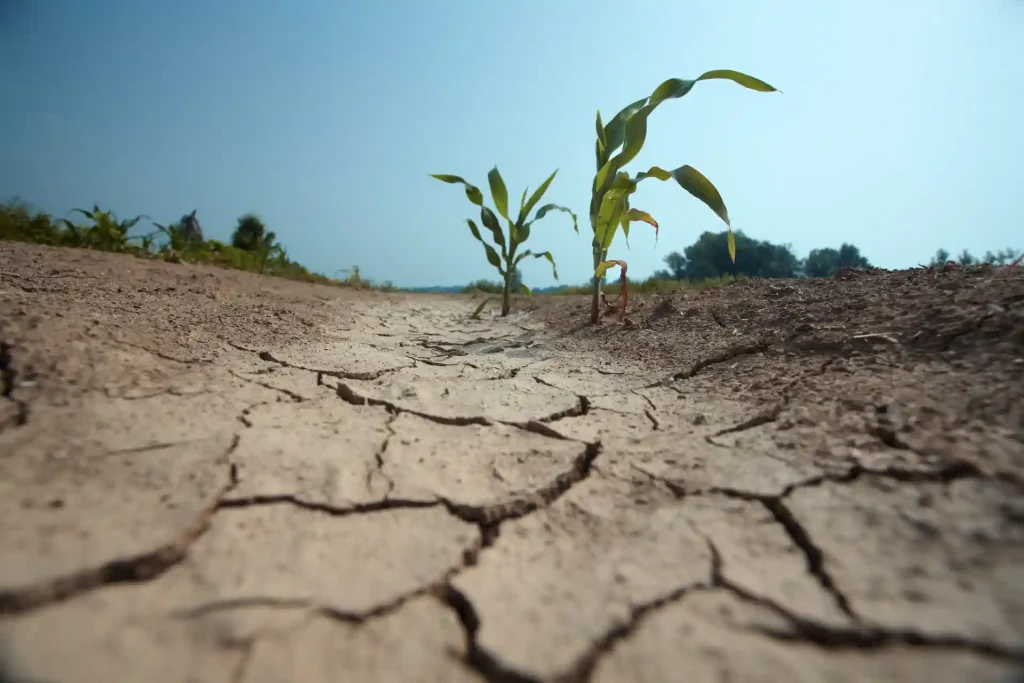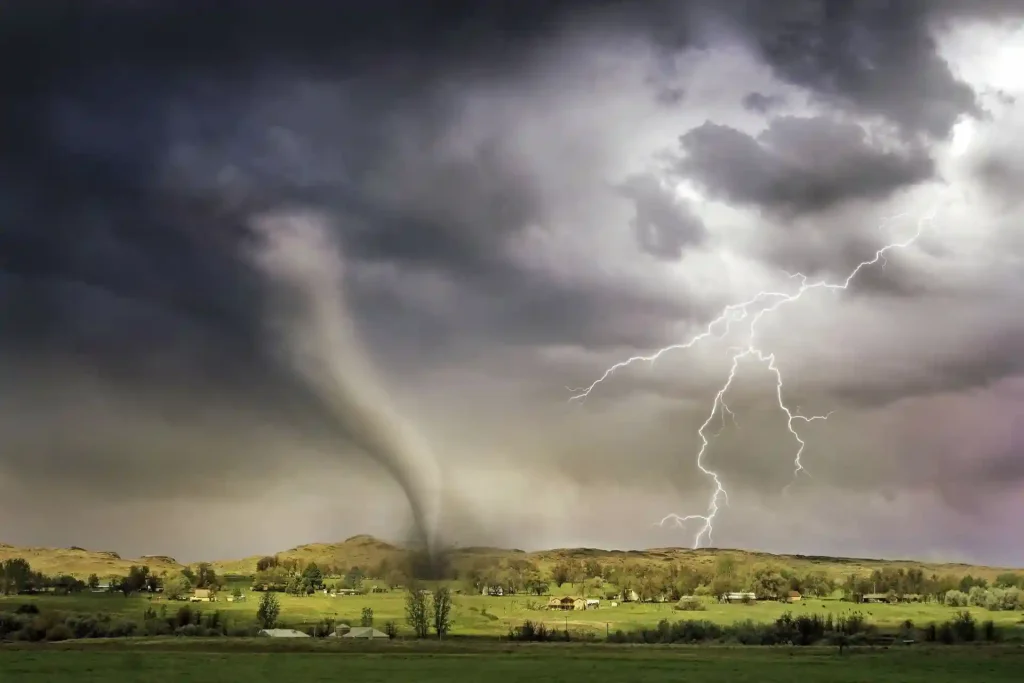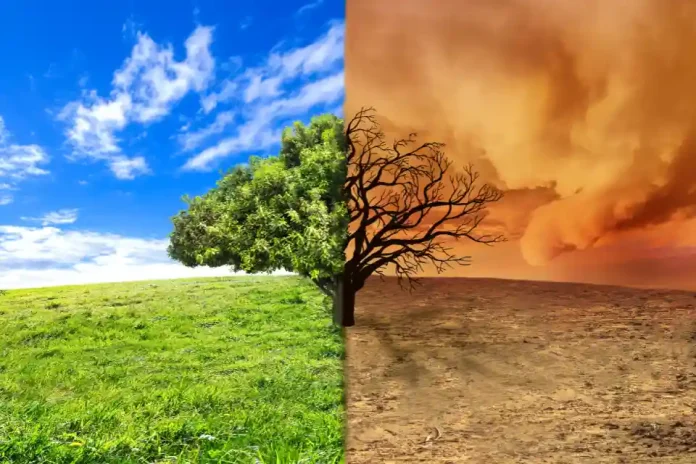Earth’s atmosphere, once a relatively stable layer protecting life on Earth, is now in a state of instability. Driven by human activities, climate change is rapidly changing weather patterns and releasing a tide of natural disasters across the globe. From drying heat waves to devastating floods, our planet is showing the alarming consequences of a boiling world, and the question arises: What are the causes of climate change?
Why is Temperature Fluctuating Around the Globe?
The primary reason for the climate crisis and increasing global temperatures is the uncontrolled emissions of greenhouse gases, particularly carbon dioxide; fossil fuels combustion, such as oil, coal, and natural gas, releases gases that act as a blanket, trapping heat from the sun and causing a warming of the Earth. The effects of which are widespread:
1. Intensified Heatwaves:
Since pre-industrial times, the average global temperature has risen by around 1 degree Celsius, and this pattern is growing daily. This results in more frequent and violent heat waves in summer. Many places are dealing with dry lands, limited water resources, and heat-related health issues. For example, Europe is humid under record-breaking temperatures this summer, with wildfires raging across France, Spain, and Portugal.
2. Increased Droughts:
If the atmosphere is warmer, it holds more moisture, which leads to increased evaporation. This, along with changing precipitation patterns, results in drier conditions and more frequent droughts. Droughts have disastrous effects on agriculture, ecosystems, and food security, especially in vulnerable areas.

3. Unexpected Floods:
Increased evaporation leads to heavier precipitation events. As the atmosphere absorbs moisture, it finally releases it in the form of heavy downpours, resulting in flash floods and riverine flooding. These floods create enormous devastation, displacing populations and costing billions of dollars in damage. Devastating floods in Bangladesh submerged villages and displaced thousands, highlighting the vulnerability of developing nations to climate change.
4. Supercharged Storm Cycle:
Warmer ocean temperatures give storms more energy, resulting in stronger hurricanes, typhoons, and cyclones. These storms bring strong winds, heavy rainfall, and flooding, leaving a path of devastation for everyone and everything. The Pacific Ocean saw an unusually active typhoon season this year, with powerful storms causing havoc in coastal regions.
5. Devastating Tornadoes:
Tornadoes are becoming more extreme as a result of climate change. Warmer air contains more moisture, which can lead to stronger tornadoes. However, it might disturb air currents, which help in tornado formation. The exact result remains unknown, but one thing is sure: climate change is making tornado weather more unpredictable and possibly dangerous. Just last week, a series of tornadoes ripped through parts of the Midwest US, leaving a trail of destruction in its way.

Check! Can Plants Stop Soil Erosion?
Answer to What are the Causes of Climate Change?
These natural calamities aren’t occurring separately. Climate change leads to existing weather patterns, resulting in a perfect storm of severe weather. Droughts, for example, can cause soil to become dehydrated, making it more vulnerable to erosion when heavy rains fall, resulting in even severe flooding.
The effects of climate change go far beyond physical destruction and economic losses. These natural disasters affect lives and livelihoods, affecting people and jeopardizing food and water security, particularly among vulnerable populations. Heat-related problems, respiratory difficulties caused by air pollution from wildfires, and the growth of waterborne pathogens are all severe health concerns.
According to scientific consensus, human activity is causing climate change, and we must take swift action to prevent its consequences. Vital measures to reduce greenhouse gas emissions involve transitioning to sustainable and cleaner energy sources such as solar and wind power, which enhance energy efficiency and preserve forests.
Also! Key Indicators Expose Energy Security in Agriculture
However, we must also adjust to the harsh realities of a changing climate and figure out what are the causes of climate change. To create a more sustainable future, investing in early warning systems, strengthening infrastructure, and producing drought-resistant crops is essential. Climate change is a complex but manageable challenge. By working together, moving to a sustainable future, and implementing effective adaptation measures, We can mitigate the impact of natural disasters and safeguard our planet for future generations.



